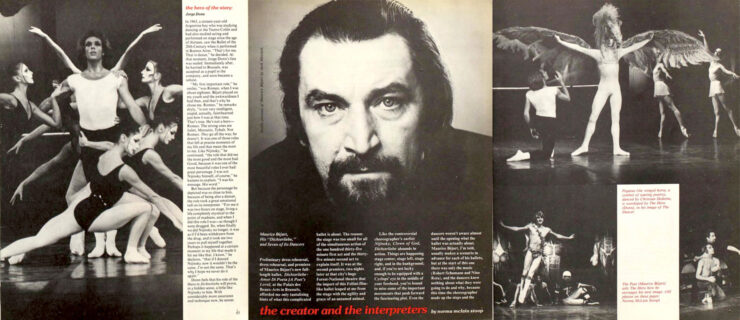Why Did We Wear White?
The first thing I noticed about Lucinda Child’s revival of Dance from 1979 was that the dancers wore white. When I danced with Trisha Brown in the 70s, we wore white too. It seems like for the whole three years I was in her company, we wore all white. Not quite as sleek or bright-wite as Lucinda’s costumes—a bit more rumpled.
White was a popular color in the 70s. I think that’s because both Lucinda and Trisha wanted a clean slate back then. A clean slate to put their new ideas onto, a color with the least amount of baggage, something that revealed the human body without drama.

One of the most powerful moments in Dance—in this very powerful accelerating dance—was when a larger-than-life image of Lucinda from 30 years ago appears on the downstage scrim. Until that moment, all the scrim dancers (ghostlike figures from 30 years ago) had been life-size to match the current dancers. But suddenly there was Lucinda in all white. She was an onscreen Ice Queen, and I was frozen to my seat. Her body looked perfectly proportioned, her face perfectly structured, and her stance held together with a strangely appealing intensity. In that long moment of stillness, she held one’s gaze more strongly than any of the actual dance moments.
In Trisha’s small company of five, we were less intense, less driven, more playful. We were less about building momentum and more about exploring what the body could do in natural settings, and the connections we could make with each other.
But these two pioneers of postmodern dance, Lucinda Childs and Trisha Brown, had an equal desire to wipe the slate clean. They wanted to start at the beginning, and what better way to signal that than to wear white?
Dare I compare this wish for white with Les Sylphides, or Swan Lake, or the Shades from Bayadère? The sylph as pure, unsullied, idealistic. Although Trisha and Lucinda were trying to get away from ballet conventions, favoring whiteness was one place where they were like ballet. After all, there was something idealistic about to starting at the beginning, washing away everything that has come before.
Pictured: Lucinda Childs on film; Caitlin Scranton dancing; photo by Sally Cohn, Courtesy Childs




